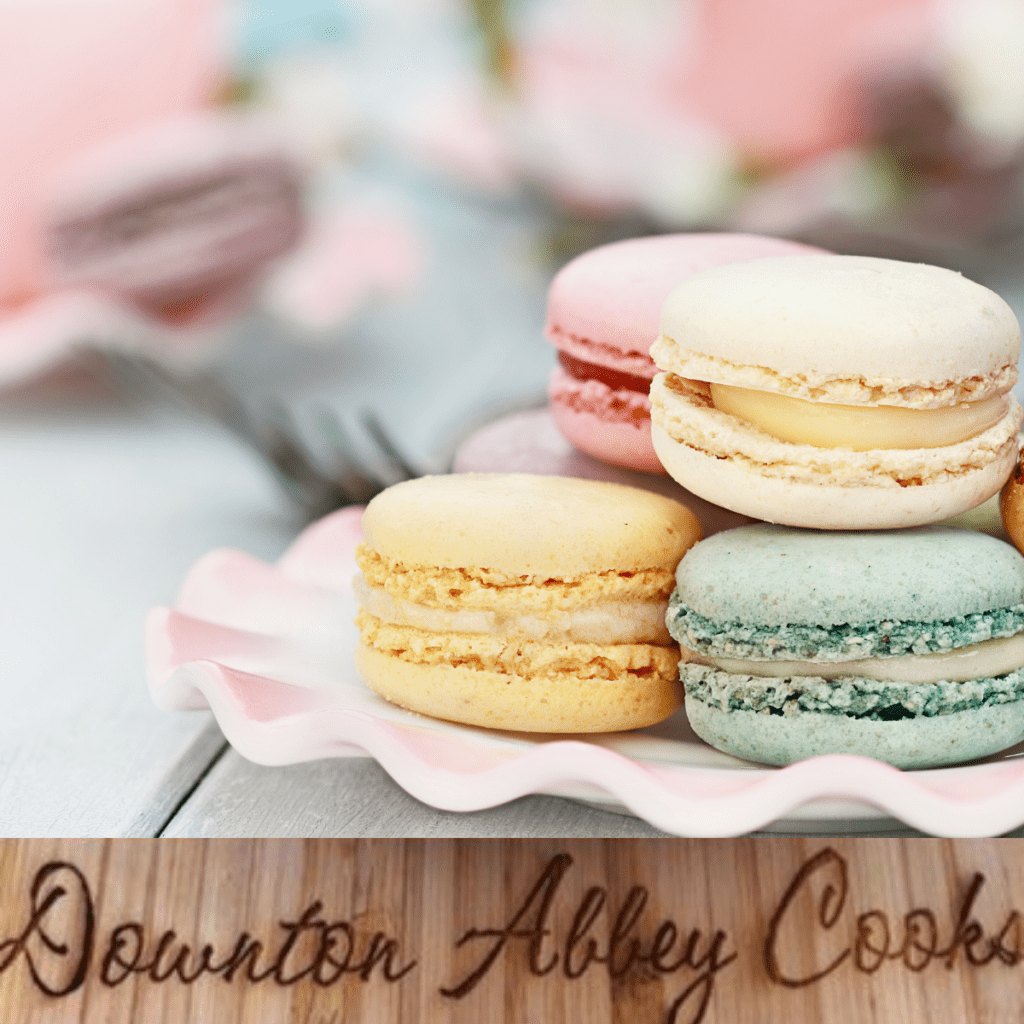French macarons are those French almond cookies that often are confused with English style “macaroons“. I first discovered them on a trip to Paris back in 2009 when my companions took me to famed Ladurée. I was so excited I bought a couple of boxes of mixed flavours on the day I was flying home. I rushed from the airport to my foodie friend’s office to figure out how to make these. We were going to take over our local market place with these treats. Sadly back in those days it was not the easiest to replicate.
After many years of trial and error, there are now more reliable instructions to help get consistent results. Once you get the basics down you can try your hand at experimenting with fillings.
Print
Easy to Master French Macarons
French "macarons" are light-as-air French sandwich cookies, not to be confused with English "macaroons”. This method, which includes making an easy sugar syrup, gives very consistent results.
Servings 20 cookies
Equipment
- parchment paper precut sheets are very convenient
Ingredients
- 1 1/2 cups almond flour
- 1 cup icing sugar
- 3 large egg whites
- pinch salt
- pinch cream of tartar
- 1/2 cup granulated sugar + 2 tbsp.
- 3 tbsp. water +1 tsp.
- 1 drop food gel paste various colours
- jams or ganache to fill
Instructions
- Process the almond flour and icing sugar in a food processor for 20 seconds. Sift to remove any large pieces and to aerate the mixture.
- Separate the eggs and put the whites in the bowl you'll use to whip them. Don't start whipping yet, but add a pinch each of salt and cream of tartar.
- Combine the water and granulated sugar in a small saucepan. Stir over medium heat until the sugar dissolves, then bring to a rapid boil.
- Boil for 2 minutes; the temperature of the syrup should reach between 235°F and 240°F. Take the syrup off the heat. Immediately start whipping the egg whites, using an electric mixer. When they hold a curved peak on the end of the beater, stop, grab the pan of hot syrup, resume beating, and pour the syrup steadily into the whites as you beat.
- Continue beating until the meringue is smooth, glossy, and forms soft peaks.
- Fold in the almond flour/sugar until everything is evenly combined, then start stirring. This will thin the mixture. Stir until the batter runs in ribbons that disappear back into the mass in 10 to 20 seconds. Test frequently, and stop stirring when you reach this point.
- Want to tint some of your macarons in fun colours? Now's your chance. The ones you may have seen in a fancy bakery are often tinted blue, pink, yellow, or green.Use a drop extra-strong gel-paste colour. Divide the batter so you can have multiple colours from one batch of batter.
- Use a teaspoon cookie scoop or a pastry bag to deposit a generous teaspoon-sized round blob of batter onto a parchment-covered baking sheet. If you want to be more precise, you can find macaron sheets which have circles to help you consistent sizes for your cookies.The cookie should flatten out, rather than remain in a tall blob.If it doesn't spread, stir the batter some more; your goal is a disc-like, fairly flat cookie.
- Repeat with the remainder of the batter. Since the cookies won't spread as they bake, you can position them fairly close together.
- Allow to rest in a dry place with good air circulation (a counter top is fine) until you can gently touch the tops and come away with a clean finger, which may take from 30 minutes to 2 hours. Towards the end of the resting time, preheat the oven to 275°F.
- Bake the cookies for 25 to 30 minutes, until firm on the top.
- Remove them from the oven, and cool completely on sheet. Use a thin spatula to carefully separate them from the parchment or foil.
- Spread half the cookies with jam, ganache, frosting, nut butter, or any combination of fillings your heart desires. Top with the remaining cookies.
Notes
Spread half the cookies with jam, ganache, frosting, nut butter, or any combination of fillings your heart desires. Top with the remaining cookies.
With a plethora of different recipes and techniques available, making macarons can be somewhat finicky. This method, which includes making an easy sugar syrup, gives very consistent results. Parchment or non-stick foil are a necessity.
If you're using a scoop rather than piping, turning the full scoop so that the open side is parallel to the parchment before releasing the batter makes a rounder cookie than if the batter is deposited from the side.
If you're using a scoop rather than piping, turning the full scoop so that the open side is parallel to the parchment before releasing the batter makes a rounder cookie than if the batter is deposited from the side.

